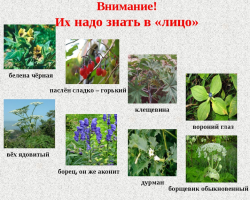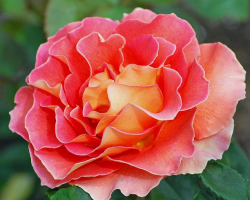The May beetle is a very dangerous insect that can ruin the entire crop. It is precisely the larvae of the May beetle that bring more harm to the garden and garden, so you need to know how to fight them correctly.
Content
Read more about all the intricacies of the fight against these harmful insect representatives will be described in this article.
The danger of the May beetle and its larvae
- Adult insects prefer to enjoy young herbs, kidneys and flowers of fruit trees. This negatively affects productivity indicators. The largest harm is brought by larvae called furrows. Their length is about 6 cm. The body is white, with a brown head. There are 6 paws.
- As soon as the larvae of the May beetle hatch, they need several years to turn into adults. Development is carried out in the soil. But they eat not only tubers, but they can chew the root of the plant to the full death of its complete death concentrated and purposefully. Most of all they prefer to eat potatoes, carrots, strawberries and strawberries.
- However, other crops growing in the garden and in the garden can be damaged. On average, an adult May beetle can only gnaw a tree root in just 24 hours, which has developed over 2 years. If you do not fight larvae, they will multiply at an accelerated pace.

This is fraught with the following consequences:
- deterioration in the quality of the soil;
- decrease in yield indicators;
- the death of plants.
The fight against the larvae of the May beetle
Holding adults
- The life expectancy of adult insects is small. And they bring much less harm than the larvae of the May beetle. However, they also need to be destroyed. In the summer, when insects fly, gardeners are engaged in their catch. This helps to prevent further reproduction.
- You can independently build a beetle trap. This will be required Plastic glasses or cut in two bottles. Inside you need to pour kvass, jam that began to roam, or beer. Spread traps on the trees. Periodically clean the containers. After all, pests will accumulate inside. Do not forget that you need to add a fresh bait.
To build a night trap, use the following instructions:
- Lubricate the inside of the jar with a sticky layer. It can be honey or solidol.
- At the bottom, place a compact flashlight.
- When it gets dark, put a trap under the tree, and turn on the flashlight.
Insects will fly into the light, and stick to the sticky layer. In the morning you will need to destroy them. Such a trap is relevant not only for May beetles, but also for other insects that fly. If you use such a home -made device regularly, you can maintain the crop.
Mechanical methods of struggle
- Consists in digging the site. After you need to manually collect pests. The procedure is carried out in April-May and throughout the summer. In warm weather, many individuals come close to the surface of the soil.
- It should be noted small efficiency of this method. After all, you will not be able to remove all pests, because some will go deep underground.

Folk methods
You need to deal with pests as soon as you notice their presence. Otherwise, the crop will be damaged. There are several effective methods. If necessary, you can combine them.
- Some gardeners advise to introduce nitrogen -containing top dressing. The larvae of the May beetle do not tolerate this component. Similar drugs will positively affect plant growth, because it will enhance the food processes. The downside is that nitrogen can slightly reduce productivity.
- You can plant next to the affected crops special plants. The best option is considered White clover. On its roots there are special bacteria that will stimulate the absorption of nitrogen from the air. Therefore, the larvae of the May beetle will look for more suitable conditions for themselves. The planting of the white clover is carried out around the planted crops or in the trunk part of the tree. As an alternative to white clover, you can use radis, cabbage, mustard, trough, lupine or elderberry.
- A very effective method is mulching. You need to mix straw, bark and crushed grass. This will not allow pests to lay eggs. It is noted that mulching helps to protect plants from weeds and other pests. In addition, the mulch layer will preserve moisture in the soil, and prevent frostbite of the roots.
- You can attract to a site of birds and animals. They love to enjoy larvae hedgehogs. Of the birds, rooks, starlings and blackbirds will help in the struggle. Attraction is carried out by placing special feeders on the site. But birds can also destroy the crop (berries).

- Fights well with pests shell on Luke. From it you need to prepare a concentrated infusion. Fill a 5-liter bucket on a third onion husk, and pour warm water. Give the mixture to brew for 5 days. After strain, and dilute with water in a ratio of 1: 1. Water the trees and beds with infusion.
Other folk folk remedies for the larvae of the May beetle include:
- Watering with ammonia. It is necessary to dilute about 20 g of the drug in 10 liters of water. It is recommended to use this method in spring and autumn. Such a solution can be carried out by spraying of plants.
- Treatment of soil with a solution of manganese. We need a 1%solution. If you spray the ground part, prepare a 0.1% solution.
Effective drugs
If the above methods have not brought the desired result, you can use ready -made drugs. They are sold in the public domain in special stores for gardeners and gardeners. Often, summer residents use contact-acid drugs. They are aimed at destroying annual larvae.

- This category includes drugs "Zemlyl" and "initiative". They have the shape of small granules and powder. The poison is embedded in the ground when spring digging is carried out. For every 10 m 2 It will take 20 g. After 72 hours, young larvae will die.
- Preparations have proven themselves well "Vallar" and "Aktara". They can be used to fight with other parasites. Sold in the form of powder or special solution. You need to make poison to the upper layers of the soil. It can also be used to process the roots of seedlings on the day of planting. The preparation of the drug is carried out according to the instructions that are indicated on the package.
- Long -length drugs can be used. The best option is considered "Anti -Hruce". Sold in liquid form. Before use, you need to dilute in water, according to the instructions. The prepared solution is used to process the root system of seedlings. If you plan to process already growing crops, the liquid flows under the root.
- Well established itself ammonia solution. To do this, dilute 200 g of ammonium nitrate into 10 liters of water. The entire volume needs to be distributed 1 m 2. A few months before planting the culture, the soil is dug up, and the drug flows. It helps in the destruction of harmful larvae, and they will not appear on the site for several more years.
Remember that insecticides must be used in protective clothing. When processing, put on gloves, a protective mask and unnecessary dense clothes. Also hold away from chemicals of children and pets.
Preventive measures from the appearance of the larvae of the May beetle
There are several simple methods to prevent the appearance of the mask beetle on the site:
- He will come to the rescue solution of ammonia (20 ml per 10 l of water). The solution of plants are watered with a solution.
- You can cook salt solution (200 g) and ammonia (50 ml). These components are diluted in 10 liters of water.
- Can be used permanganate solution (5 g) and water (10 l). The prepared mixture is best suited for protecting potatoes.
As you can see, different methods can help from the larvae of May beetles. You have the right to use both folk methods and ready -made chemicals. However, it is best to combine them to notice the maximum result.
Useful articles on the site:
- Nitroammofoska fertilizer
- Signs for gardeners
- That you cannot feed ash
- Weeds in the garden
- When and how to clean the carrots correctly







